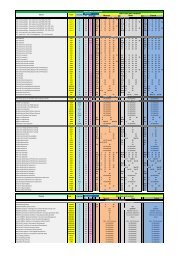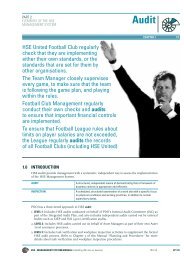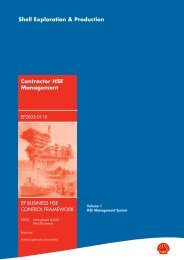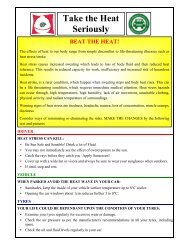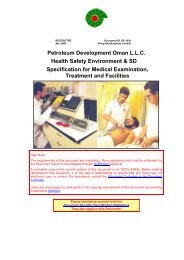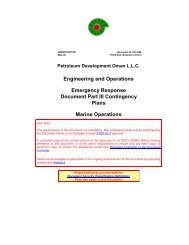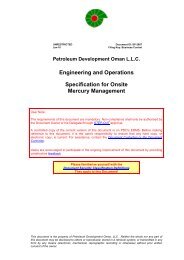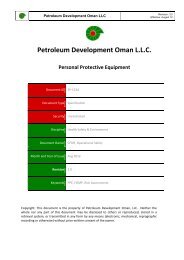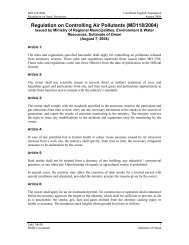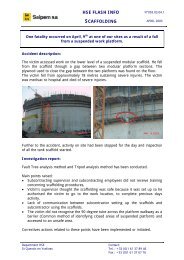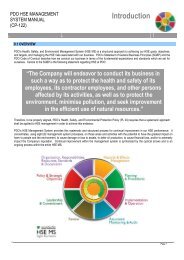Estate Service Asset - PDO
Estate Service Asset - PDO
Estate Service Asset - PDO
Create successful ePaper yourself
Turn your PDF publications into a flip-book with our unique Google optimized e-Paper software.
Petroleum Development Oman<br />
<strong>Estate</strong> <strong>Service</strong>s <strong>Asset</strong><br />
Environmental Assessment<br />
2002 Review and Update<br />
species. Four reptile species, viz., Bufo Arabicus, Bufu Dhofarensis, Bunopus<br />
Spatalurus Hajarens and Scincus Mitranus found in this area and are endemic to the<br />
Arabian Gulf.<br />
5.8.3 Nature Reserves<br />
There are no nature reserves, wild life sanctuaries, mangroves etc. within the MAF<br />
and RAH areas. Beyond <strong>PDO</strong>’s asset boundaries, the only place of ecological<br />
significance is the Qurum Natural Park, which is Al Qurum about 5 km from MAF.<br />
This park is located in the midst of urban area. This park is developed with relatively<br />
high vegetal cover. The flora and fauna include the species discussed in Sections 5.8.1<br />
and 5.8.2 above. There is no wildlife in the park.<br />
5.9 Marine Ecology<br />
5.9.1 General<br />
The beaches along the coastline are composed primarily of fine sand derived from the<br />
neighbouring land with shallow areas extending up to 2 km offshore. The shoreline<br />
along the east coast of Oman is known to be mobile with a generally north west drift<br />
of sediment along the coastline. Several inlets along the coastline provide important<br />
habitats for coastal flora, birds and juvenile fish populations. The Dimaniyat Island<br />
Nature Reserve is an archipelago of nine islands approximately 16km off the<br />
coastline. These islands provide a protected habitat for a diverse population of birds,<br />
marine, and terrestrial fauna.<br />
5.9.2 Seawater Quality<br />
The seawater temperature at MAF ranges from 25°C in winter (February and March)<br />
up to 39°C in summer (June and July). The salinity ranges from 35 to 40 parts per<br />
thousand. Recent studies did not indicate at gross contamination of the seawater in<br />
MAF bay. Earlier studies indicate high levels of phytoplankton chlorophyll in<br />
winter/spring dominated by diatom blooms (e.g. Coscinodiscus, Skeletonema). One<br />
characteristic of this region is the occurrence of red tides dominated by dinoflagellates<br />
(e.g. Ceratium, Noctiluca). During late summer and early autumn, nutrient enrichment<br />
produces blooms, which means that there is continuously high primary productivity<br />
and rich herbivorous zooplankton communities available (e.g. copepods). These in<br />
turn support large stocks of sardines, anchovies and larger pelagics.<br />
©HMR Environmental Engineering Consultants C5 - 6<br />
Oman’s Environmental Consultancy<br />
HMR\1501\<strong>Estate</strong> <strong>Service</strong>s



